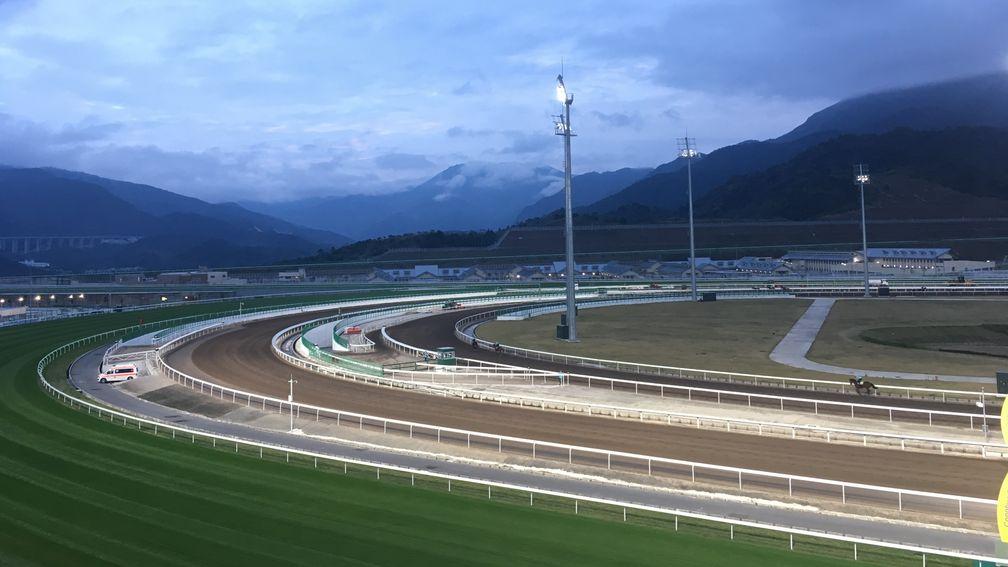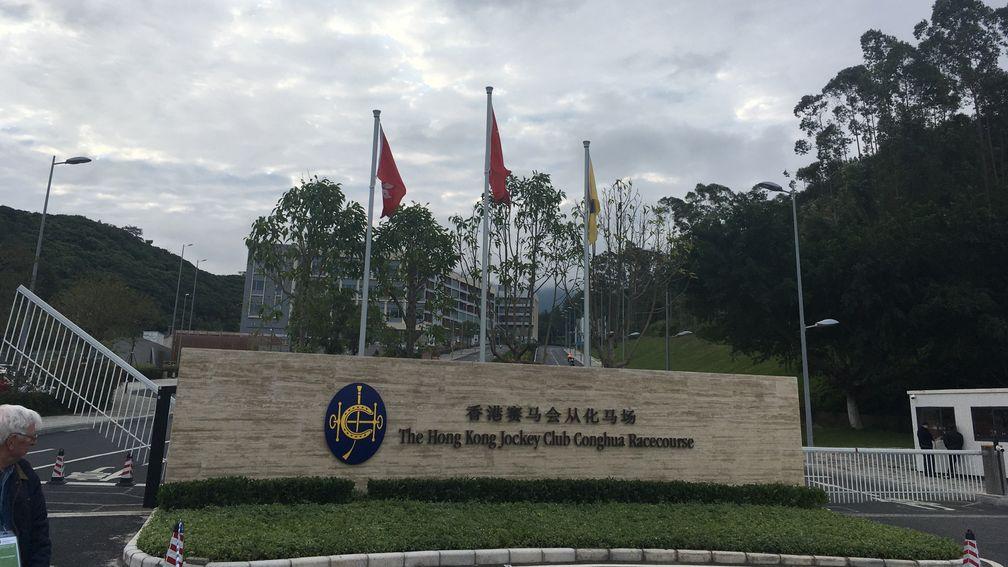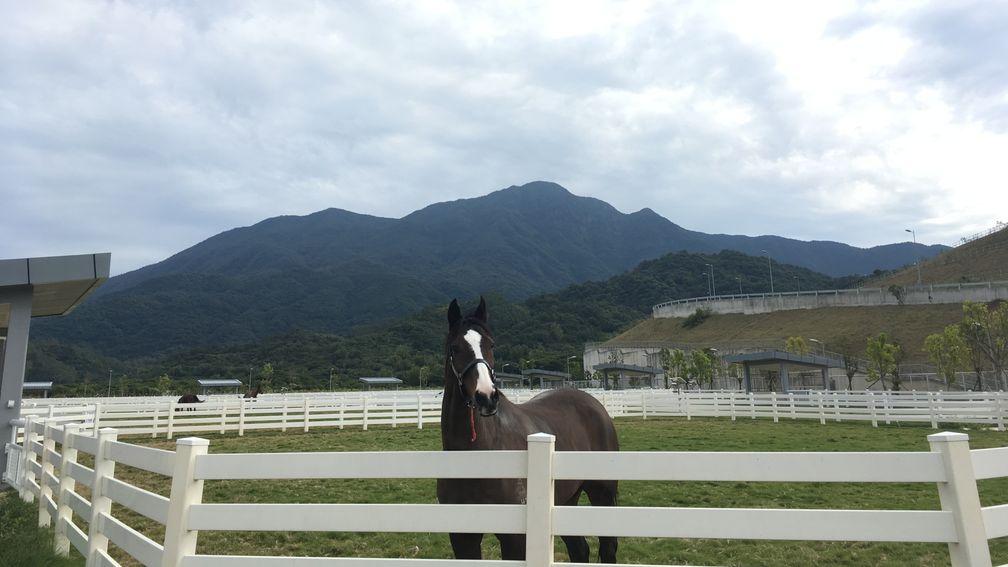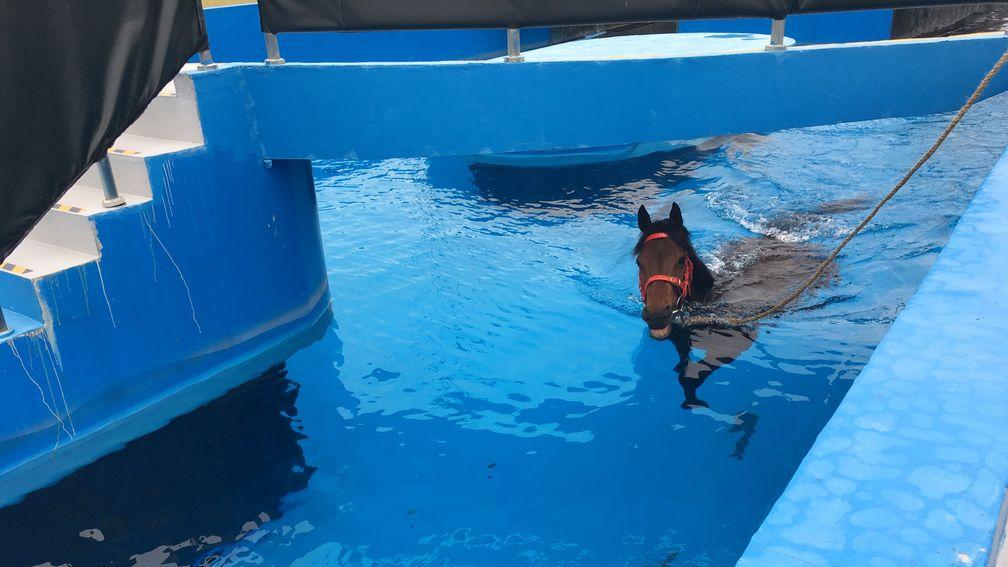Think the same but different – China's new track puts together best of the rest
Howard Wright travels to China's newest racecourse

The illuminated sign at the main entrance is the giveaway: Hong Kong Jockey Club Conghua Racecourse. What began life as the Conghua Training Centre, when site development work started in November 2011, has quietly morphed into a full-blown racecourse.
References to CTC can still be found, by way of the HKJC’s latest annual report and the dedicated website address ctc.hkjc.com, for instance. But the website itself, which contains a link to ‘CRC Aerial View’ and on its front page shows the official opening in August with the words Hong Kong Jockey Club Conghua Racecourse as a back drop, leaves no doubt: this is a racecourse in waiting, complete with a superb track and well-equipped stewards’ inquiry, jockeys’ changing, broadcasting and medical rooms.
Situated about 130 miles north of Hong Kong in mainland China, the bulk of the 150-hectare site, including its ten-furlong, right-handed turf surface, nestles high above the spa town of Conghua. Think Bath going the other way round but with irrigation.
Driving three hours from the Shenzen border point to Guangzhou, capital of Guandong province, passing grey industrial development after grey industrial development, Conghua emerges as a breath of fresh air, an oasis of greenery, circled by a clear, free-flowing river and surrounded by mountains and forests.
Its two luxury hotels and top-class golf course provide tangible evidence that this is an area where tourism is important and growing, not least because of its hot springs. Think Baden-Baden with dim sum.

The mention of Baden-Baden is not out of place. The lead official for tourism in Conghua first raised the comparison, and HKJC chief executive Winfried Engelbrecht-Bresges, a former head of the German Jockey Club, was not inclined to dissuade him.
“They want to attract high-end tourism, and I hope our project will be part of that development by encouraging the growth of equestrianism,” Engelbrecht-Bresges says. “The local government is delighted with what we have done so far. They are looking to establish equestrian sport at an international level and the first phase is the development of a centre of excellence.”
Where Conghua racecourse, 50 miles north east of Guangzhou, capital of Guandong province
When Tuesday, December 11
The area already has equestrian history, since it was the venue for the 2010 Asian Games in Guangzhou, for which the HKJC designed and built the site. It was a natural next step to buy the land when the HKJC accepted that its 1,200-box stabling at Sha Tin racecourse, which celebrated its 40th anniversary this month, required major renovation. Expanding the pool of horses for racing to meet growing demand from owners was a complementary but equally important consideration.
At the comfortable distance of seven years, Engelbrecht-Bresges makes light of early structural problems in a venture that has so far cost the equivalent £377 million. “While there were several issues in the early years of construction, those were managed and overcome,” he says, “and what has blossomed in Conghua is a monumental facility for Hong Kong’s horses, unrivalled in China and, I would suggest, much of the world.”
Never knowingly underselling itself, the HKJC has indeed created a centre that will stand international comparisons.
The numbers are impressive: as well as the turf circuit, two inner all-weather training tracks and a five-furlong uphill gallop that mirrors Newmarket’s but is a novelty for horses from Hong Kong who pound the flat Sha Tin surfaces on a daily basis; eight single-storey and one double-storey stable blocks, with nearly 200 boxes, as spacious, airy and light as those in Sha Tin are claustrophobic; 20 turn-out paddocks; an equine swimming pool, water treadmill and three aqua spas.
With just 142 active racehorses listed on site at the beginning of this week, early-morning exercise is an eerily quiet, undemanding occasion, compared with the frenetic activity that makes watching gallops at Sha Tin such a compelling experience. Yet the comparative peace and quiet of Conghua, which took in its first short-term residents in July, is already paying dividends for most of the nine trainers who were persuaded to act as pioneers.

The winning strike-rate for horses prepared at Conghua on their return to Sha Tin and Happy Valley is currently around ten per cent and champion trainer John Size is especially complimentary about the exercise.
Never one to use four words when two will suffice, or to divulge the secrets of his success, Size opens up when he talks about the ex-Irish four-year-old Calculation, who lost his way after a Hong Kong debut win in July 2017 but has climbed back up the ladder, including with a win, in four outings this season.
“He had a break and went to Conghua on July 20 with the first batch of horses and he’s been there ever since, just coming back for his races,” Size says. “He’s certainly enjoying the facility. It’s suitable for him; he’s an automatic push-back horse who does everything pretty quickly and is a little nervous, so the track work at Conghua suits him a bit better. It’s quieter and he’s adapted very well.
“Most horses will adapt to Conghua as a training centre; they’ll take it pretty much in their stride. Each trainer has to decide which horses he is comfortable to send. Some might want to send a certain type of horse, and some horses will go up for a few weeks, just to give them a break or to get them going. There are many different angles, and there will be different reasons.”
With interest growing faster than originally anticipated, two more trainers are expected to be added to the line-up after the Chinese New Year in February and up to three more at the end of the season.
When they arrive, they will be immediately exposed to another deliberately planned aspect of Conghua’s training experience, which from the outset was extended to staff, from grooms to work riders and jockeys.

A separate stable has 60 boxes for retired racehorses, on whom new staff and riders learn the rudiments of the business after spending six months at an equestrian centre in Guangzhou.
Smartly turned in out in t-shirts that proclaim To Strive Is To Shine, most have never ridden before and those 15 students on each jockeys’ course will spend six months before relocating to Sha Tin – but will not be allowed to ride in races until they have been overseas, usually to Australia or New Zealand.
Andrew Harding, HKJC executive director for racing, explains: “We have been training staff in China for nine years, but vocational training has been accelerated recently and we are now seeing the fruits of that experience. You can see it in the confidence the trainers have in staff.”
Training local staff at Conghua extends beyond those exercising the horses. The farriery forge plays host to five apprentice farriers and two experienced farriers undergoing further training, while around every corner of the high-class veterinary facility there are graduates expanding their knowledge, including attending Royal College of Veterinary Surgeons courses in London.

Chris Riggs, the HKJC’s head of veterinary clinical services, exudes pride in the facility. “This is a huge step forward for horse welfare in China,” he says. “The commitment is that any horse here gets the same level of clinical care that we provide in Sha Tin. The facility has been designed to last 50 years with expansion, and from a business point of view we’re here to provide services that ensure the horse population is at its peak to supply the racing industry.”
Visitors wearing unflattering, Silent Witness-style white coats enter the equine hospital through a double set of gates, a hand-washing exercise and footwear drenching reminiscent of Britain’s foot-and-mouth precautions. The bio-security experience mirrors that of horses and staff heading from Sha Tin, who enter sealed horseboxes at the point of departure and travel four hours up the old highway to Guangzhou before emerging into the disease-free environment of Conghua
The whole enterprise has been developed to impress on national and international authorities that as well as helping the tourism drive, Conghua can provide a template in a country that has so far lagged behind on welfare issues.
Engelbrecht-Bresges, who foresees the day when Conghua imports colts whose breeding potential will provide new opportunities for owners, stresses: “We believe that Conghua’s equine disease-free zone, combined with the capabilities of the training centre and the Guangdong Huangcun Sports Training Centre, could support the development of the equine industry in the Greater Bay Area, with a view to its becoming a centre of equine excellence.”
In the meantime, the next step in the development will come on March 23, with the staging of five exhibition races under HKJC prize-money and results status conditions.
Crowd numbers will be limited to 5,000 – any more would trigger fresh local public entertainment licence issues – housed in temporary marquees, since the site has a well-appointed trainer’s pavilion opposite the winning post but no grandstand in a suitable viewing position. Think Chelmsford with chopsticks.
The elephant on the state-of-the-art site, of course, is betting, which is illegal in China. “No betting, not even in Hong Kong,” Engelbrecht-Bresges says. “This will be a Jockey Club meeting, which will showcase the Conghua facility in particular and horseracing in general as part of our initiative to develop an equine industry in the Greater Bay Area.”
As long as Xi Jinping is president of China the no-betting diktat will remain, but no-one knows what may happen further down the line. For the moment, though, the HKJC will press on developing Conghua as the most impressive equestrian site in mainland China.
Look back on the best jumps action of the year in the new edition of the Racing Post Annual. Click here to order or call 01933 304858
Published on 1 January 2019inFeatures
Last updated 15:51, 1 January 2019
- Government says it is working 'at pace' to have white paper measures in force by the summer
- 'The only thing you can do is lie fallow and regroup' - Meades to return with scaled-back operation following blank period
- The Gambling Commission has launched its new corporate strategy - but what are the key points?
- 'It was tragic it happened to Paddy but it was a good thing for the jockeys who followed - good came out of bad'
- Acquisitions, exits and retail resilience - what we learned from Flutter and 888's results
- Government says it is working 'at pace' to have white paper measures in force by the summer
- 'The only thing you can do is lie fallow and regroup' - Meades to return with scaled-back operation following blank period
- The Gambling Commission has launched its new corporate strategy - but what are the key points?
- 'It was tragic it happened to Paddy but it was a good thing for the jockeys who followed - good came out of bad'
- Acquisitions, exits and retail resilience - what we learned from Flutter and 888's results